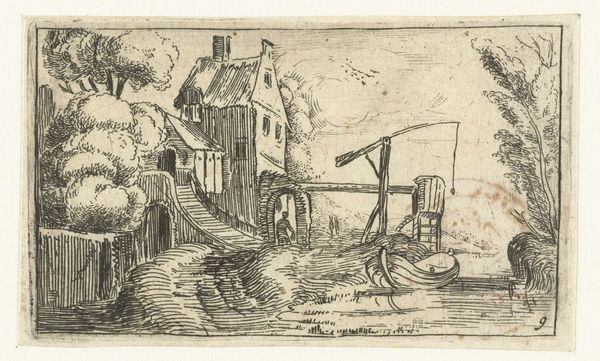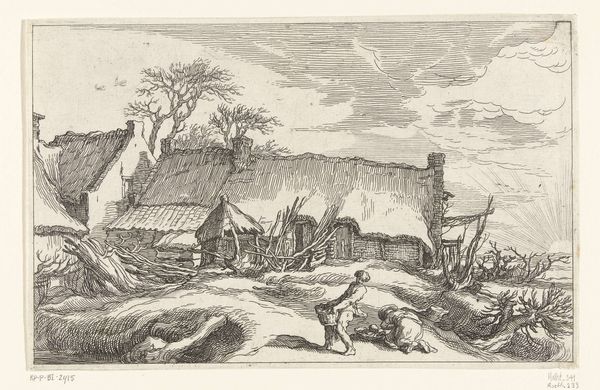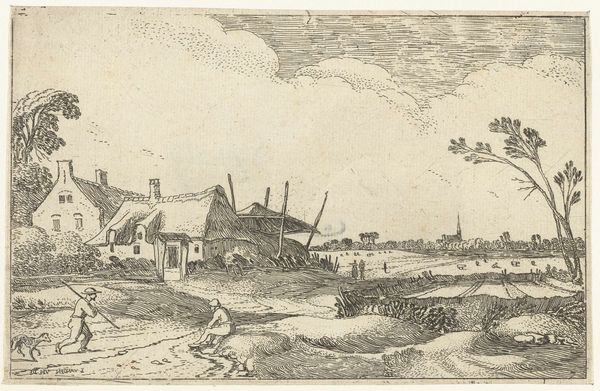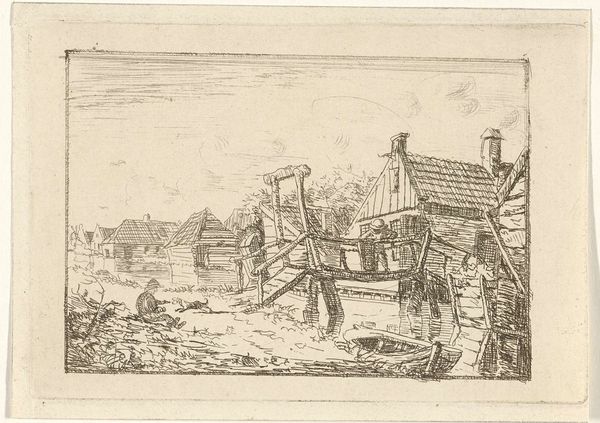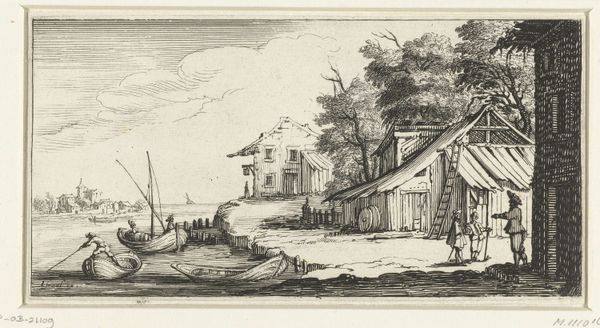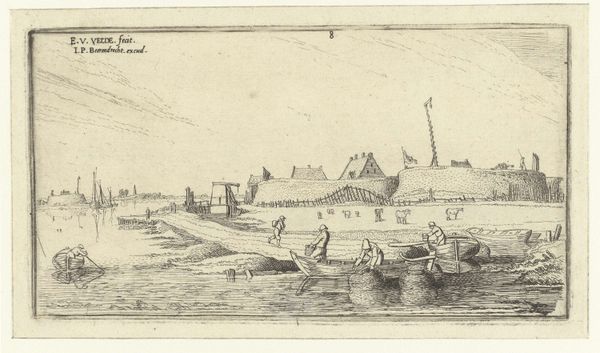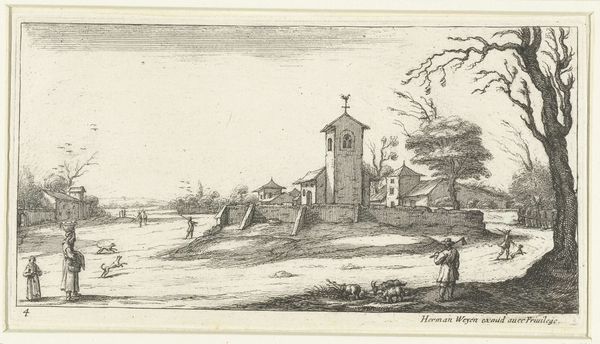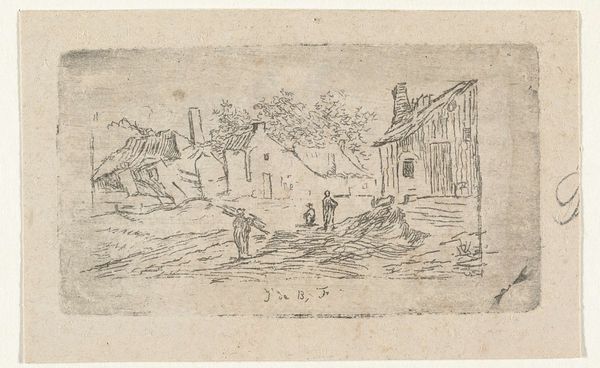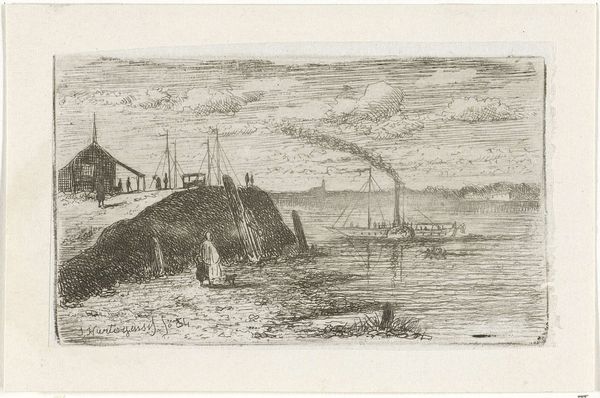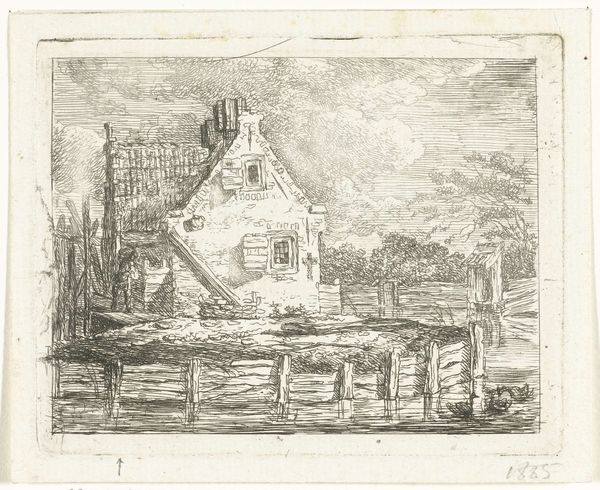
drawing, paper, ink
#
drawing
#
pencil sketch
#
landscape
#
paper
#
ink
#
romanticism
#
genre-painting
Dimensions: height 90 mm, width 135 mm
Copyright: Rijks Museum: Open Domain
Curator: This is "Wooden Bridge," a drawing by Gerrit Lamberts, created sometime between 1810 and 1850. It's rendered in ink and pencil on paper. Editor: My first impression is one of quietude. It's a very still, almost melancholic scene, despite the presence of people and animals. The bridge dominates, but it feels like it's observed from a distance. Curator: That feeling resonates with the broader Romantic movement, which saw a shift in perspective from urban centers to the rural, the introspective, and often, a lament for a simpler past. You know, the agrarian idyll so often tinged with sadness? Editor: Exactly. Bridges are powerful symbols aren't they? Connections, transitions... Here though, this wooden structure looks precarious, worn. It evokes a sense of temporality, perhaps even decline. Consider its structural form! What message does it deliver when paired with figures resting idly along the embankment? Curator: Absolutely, that resonates so much. We should address those background figures and setting now, given what you shared earlier about how these relate in memory. If viewers consider what was happening at the time it was created, perhaps as a post-colonial critique that Romantic era works provided visual contrast from the industrialized, increasingly class-conscious, Dutch landscapes? Editor: That certainly changes our reading. Look at how he rendered the figure's leisure. This almost seems intentional in contrast to those "ugly" new urban spaces as reminders of how life "ought" to be enjoyed, perhaps offering ways to mentally traverse physical divides. I can almost feel the sunshine. Curator: And don’t forget about that dog running freely in the open space! I imagine at the time that evoked a very powerful emotion of escape. Thanks so much for taking me into the nuances that these visual elements may offer. I definitely look at this image from a more historical context! Editor: My pleasure! By the same token, I can certainly understand now why someone may feel compelled to approach similar artwork within an institutional, industrialized perspective. A fascinating intersection, indeed.
Comments
No comments
Be the first to comment and join the conversation on the ultimate creative platform.

